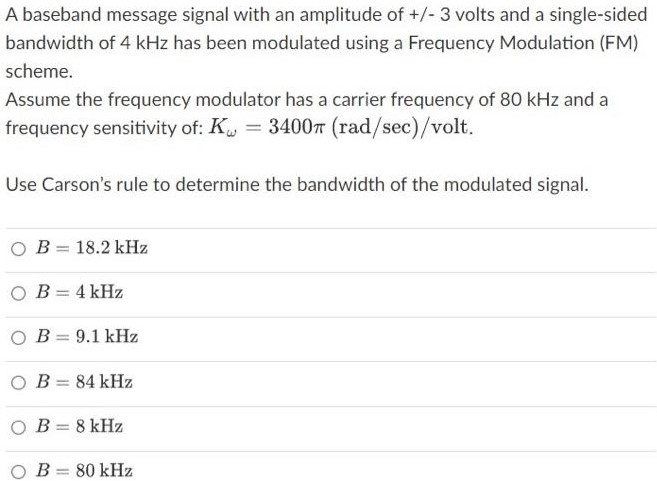A baseband message signal with an amplitude of +/−3 volts and a single-sided bandwidth of 4 kHz has been modulated using a Frequency Modulation (FM) scheme. Assume the frequency modulator has a carrier frequency of 80 kHz and a frequency sensitivity of: Kω = 3400π (rad/sec)/volt. Use Carson's rule to determine the bandwidth of the modulated signal. B = 18.2 kHz B = 4 kHz B = 9.1 kHz B = 84 kHz B = 8 kHz B = 80 kHz
